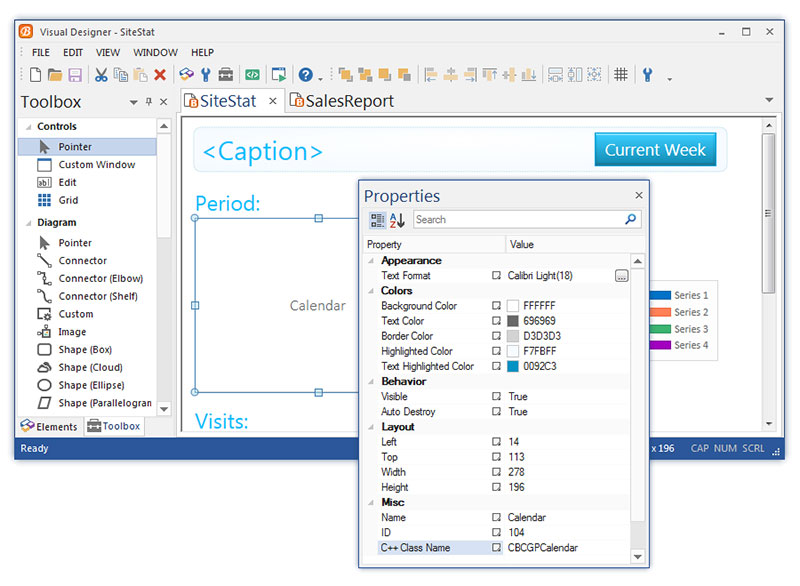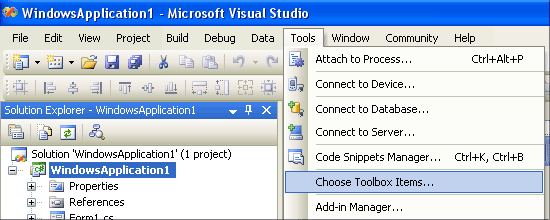Declare Serial Mfc
Run-Time Object Model Services. 12 minutes to read.
Contributors. In this article The classes and encapsulate several object services, including access to run-time class information, serialization, and dynamic object creation.
All classes derived from CObject inherit this functionality. Access to run-time class information enables you to determine information about an object's class at run time. The ability to determine the class of an object at run time is useful when you need extra type-checking of function arguments and when you must write special-purpose code based on the class of an object. Run-time class information is not supported directly by the C language.
Serialization is the process of writing or reading an object's contents to or from a file. You can use serialization to store an object's contents even after the application exits.

The object can then be read from the file when the application is restarted. Such data objects are said to be 'persistent.'
Dynamic object creation enables you to create an object of a specified class at run time. For example, document, view, and frame objects must support dynamic creation because the framework needs to create them dynamically. The following table lists the MFC macros that support run-time class information, serialization, and dynamic creation. For more information on these run-time object services and serialization, see the article. Run-Time Object Model Services Macros Enables access to run-time class information (must be used in the class declaration).
Enables dynamic creation and access to run-time class information (must be used in the class declaration). Enables serialization and access to run-time class information (must be used in the class declaration). Enables access to run-time class information (must be used in the class implementation). Enables dynamic creation and access to run-time information (must be used in the class implementation).
Permits serialization and access to run-time class information (must be used in the class implementation). Returns the CRuntimeClass structure that corresponds to the named class. OLE frequently requires the dynamic creation of objects at run time. For example, an OLE server application must be able to create OLE items dynamically in response to a request from a client. Similarly, an automation server must be able to create items in response to requests from automation clients. The Microsoft Foundation Class Library provides two macros specific to OLE.

Dynamic Creation of OLE Objects Determines whether the Common Controls library implements the specified API. Determines whether the Common Controls library implements the specified API. Enables objects to be created through OLE automation. Declares the GetUserTypeNameID and GetMiscStatus member functions of your control class. Declares that the OLE control provides a list of property pages to display its properties.
Enables objects to be created by the OLE system. Implements the GetUserTypeNameID and GetMiscStatus member functions of your control class. Either this macro or must appear in the implementation file for any class that uses DECLAREOLECREATE. AFXCOMCTL32IFEXISTS Determines whether the Common Controls library implements the specified API. Syntax AFXCOMCTL32IFEXISTS( proc ); Parameters proc Pointer to a null-terminated string containing the function name, or specifies the function's ordinal value. If this parameter is an ordinal value, it must be in the low-order word; the high-order word must be zero.
This parameter must be in Unicode. Remarks Use this macro to determine whether the Common Controls library the function specified by proc (instead of calling. Requirements afxcomctl32.h, afxcomctl32.inl See Also AFXCOMCTL32IFEXISTS2 Determines whether the Common Controls library implements the specified API (this is the Unicode version of ). Syntax AFXCOMCTL32IFEXISTS2( proc ); Parameters proc Pointer to a null-terminated string containing the function name, or specifies the function's ordinal value. If this parameter is an ordinal value, it must be in the low-order word; the high-order word must be zero. This parameter must be in Unicode.
Remarks Use this macro to determine whether the Common Controls library the function specified by proc (instead of calling. This macro is the Unicode version of AFXCOMCTL32IFEXISTS. Requirements afxcomctl32.h, afxcomctl32.inl See Also DECLAREDYNAMIC Adds the ability to access run-time information about an object's class when deriving a class from CObject. DECLAREDYNAMIC(classname) Parameters classname The actual name of the class. Remarks Add the DECLAREDYNAMIC macro to the header (.h) module for the class, then include that module in all.cpp modules that need access to objects of this class. If you use the DECLARE DYNAMIC and IMPLEMENTDYNAMIC macros as described, you can then use the RUNTIMECLASS macro and the CObject::IsKindOf function to determine the class of your objects at run time.
How To Declare Serial In Arduino

If DECLAREDYNAMIC is included in the class declaration, then IMPLEMENTDYNAMIC must be included in the class implementation. For more information on the DECLAREDYNAMIC macro, see. Example See the example for. Requirements Header: afx.h DECLAREDYNCREATE Enables objects of CObject-derived classes to be created dynamically at run time. DECLAREDYNCREATE(classname) Parameters classname The actual name of the class.
Remarks The framework uses this ability to create new objects dynamically. For example, the new view created when you open a new document. Document, view, and frame classes should support dynamic creation because the framework needs to create them dynamically. Add the DECLAREDYNCREATE macro in the.h module for the class, then include that module in all.cpp modules that need access to objects of this class. If DECLAREDYNCREATE is included in the class declaration, then IMPLEMENTDYNCREATE must be included in the class implementation. For more information on the DECLAREDYNCREATE macro, see. Note If you use IMPLEMENTOLECREATEFLAGS, you can specify which threading model your object supports by using the nFlags parameter.
If you want to support only the single-treading model, use IMPLEMENTOLECREATE. The external name is the identifier exposed to other applications. Client applications use the external name to request an object of this class from an automation server. The OLE class ID is a unique 128-bit identifier for the object.
It consists of one long, two WORDs, and eight BYTEs, as represented by l, w1, w2, and b1 through b8 in the syntax description. The Application Wizard and code wizards create unique OLE class IDs for you as required. Requirements Header: afxdisp.h See Also IMPLEMENTOLECTLTYPE Implements the GetUserTypeNameID and GetMiscStatus member functions of your control class.
Syntax DECLAREOLECTLTYPE( classname, idsUserTypeName, dwOleMisc ) Parameters classname The name of the control class. IdsUserTypeName The resource ID of a string containing the external name of the control.
DwOleMisc An enumeration containing one or more flags. For more information on this enumeration, see in the Windows SDK. Remarks In addition to IMPLEMENTOLECTLTYPE, you must add the DECLAREOLECTLTYPE macro to your control class declaration. The GetUserTypeNameID member function returns the resource string that identifies your control class. GetMiscStatus returns the OLEMISC bits for your control. This enumeration specifies a collection of settings describing miscellaneous characteristics of your control. For a full description of the OLEMISC settings, see in the Windows SDK.
Powtoon premium features. Note The default settings used by the ActiveX ControlWizard are: OLEMISCACTIVATEWHENVISIBLE, OLEMISCSETCLIENTSITEFIRST, OLEMISCINSIDEOUT, OLEMISCCANTLINKINSIDE, and OLEMISCRECOMPOSEONRESIZE. Requirements Header: afxctl.h See Also IMPLEMENTSERIAL Generates the C code necessary for a dynamic CObject-derived class with run-time access to the class name and position within the hierarchy. IMPLEMENTSERIAL(classname, baseclassname, wSchema) Parameters classname The actual name of the class.
Baseclassname The name of the base class. WSchema A UINT 'version number' that will be encoded in the archive to enable a deserializing program to identify and handle data created by earlier program versions. The class schema number must not be -1. Remarks Use the IMPLEMENTSERIAL macro in a.cpp module; then link the resulting object code only once. You can use the AFXAPI macro to automatically export the CArchive extraction operator for classes that use the DECLARESERIAL and IMPLEMENTSERIAL macros. Bracket the class declarations (located in the.h file) with the following code: #undef AFXAPI #define AFXAPI AFXEXTCLASS // #undef AFXAPI #define AFXAPI For more information, see the.
Example IMPLEMENTSERIAL(CAge, CObject, VERSIONABLESCHEMA 2) Requirements Header: afx.h RUNTIMECLASS Gets the run-time class structure from the name of a C class. RUNTIMECLASS(classname) Parameters classname The actual name of the class (not enclosed in quotation marks). Remarks RUNTIMECLASS returns a pointer to a structure for the class specified by classname.
Only CObject-derived classes declared with DECLAREDYNAMIC, DECLAREDYNCREATE, or DECLARESERIAL will return pointers to a CRuntimeClass structure. For more information, see. Example CRuntimeClass. prt = RUNTIMECLASS(CAge); ASSERT(strcmp(prt-mlpszClassName, 'CAge') 0); Requirements Header: afx.h DECLAREOLECREATE Enables objects of CCmdTarget-derived classes to be created through OLE automation. DECLAREOLECREATE(classname) Parameters classname The actual name of the class.
Remarks This macro enables other OLE-enabled applications to create objects of this type. Add the DECLAREOLECREATE macro in the.h module for the class, and then include that module in all.cpp modules that need access to objects of this class. If DECLAREOLECREATE is included in the class declaration, then IMPLEMENTOLECREATE must be included in the class implementation. A class declaration using DECLAREOLECREATE must also use DECLAREDYNCREATE or DECLARESERIAL.
Requirements Header: afxdisp.h IMPLEMENTOLECREATE Either this macro or must appear in the implementation file for any class that uses DECLAREOLECREATE. IMPLEMENTOLECREATE(classname, externalname, l, w1, w2, b1, b2, b3, b4, b5, b6, b7, b8) Parameters classname The actual name of the class. Externalname The object name exposed to other applications (enclosed in quotation marks).
L, w1, w2, b1, b2, b3, b4, b5, b6, b7, b8 Components of the class's CLSID. Note If you use IMPLEMENTOLECREATE, by default, you support only the single threading model. If you use IMPLEMENTOLECREATEFLAGS, you can specify which threading model your object supports by using the nFlags parameter. The external name is the identifier exposed to other applications. Client applications use the external name to request an object of this class from an automation server. The OLE class ID is a unique 128-bit identifier for the object.
It consists of one long, two WORDs, and eight BYTEs, as represented by l, w1, w2, and b1 through b8 in the syntax description. The Application Wizard and code wizards create unique OLE class IDs for you as required. Requirements Header: afxdisp.h See Also Feedback.
Dear thanks for you source code and clear explanations about codes, i am using VS 2005 and i used your cods but it was not work, i send errors in the below: 1- Build started: Project: hello, Configuration: Debug Win32 - 1Compiling. Hello, I have generated my code in eclipse ide. The code seems to running fine. I am able to open the serial port and able to receive the data too. But I am facing issues with the writing part.
The application seems to getting stuck at WriteFile function. I tried checking the value of the status returned by this function but code seems to be getting stuck in WriteFile function itself as it never reaches the next part of the code. Below is my implementation of WriteFile function in which transmitBuffer is a char type array. RetVal = WriteFile(portHandle, transmitBuffer, 10, &bytesTransmitted, NULL); Can somebody help??. or to post comments.